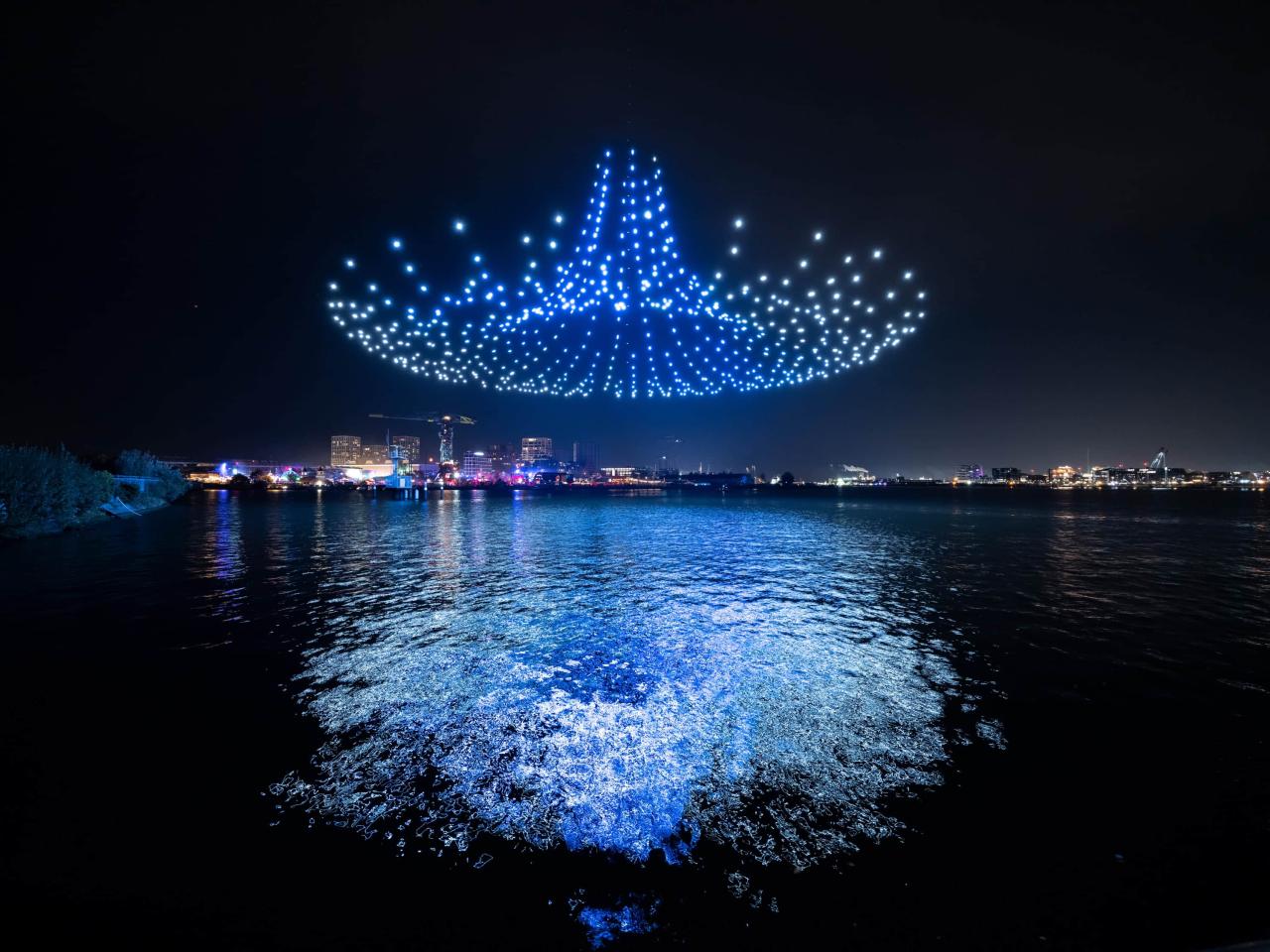Florida Drone Show: Imagine dazzling aerial displays painting the Florida sky with light and movement. This guide dives into the world of Florida drone shows, covering everything from permits and regulations to the economic impact and environmental considerations. We’ll explore popular locations, diverse show types, and the innovative technology behind these spectacular events. Get ready for a fascinating look at this exciting industry!
From breathtaking choreographed routines to vibrant advertising displays, Florida’s drone show scene is bursting with creativity. We’ll examine the logistical challenges and triumphs of hosting these events, the economic benefits they bring to the state, and the steps taken to ensure both audience and environmental safety. This guide provides a comprehensive overview, making it a valuable resource for anyone interested in the planning, execution, or appreciation of Florida drone shows.
Florida Drone Show Regulations and Permits
Navigating the regulatory landscape for drone shows in Florida requires understanding permit processes, airspace restrictions, and varying requirements based on show scale. This section provides a comprehensive overview to help you plan and execute a successful and legal drone show.
Obtaining Permits for Drone Shows in Florida, Florida drone show
Securing the necessary permits involves several steps. First, you must identify the specific location and airspace classification. Then, you submit a detailed application to the Federal Aviation Administration (FAA), including flight plans, safety protocols, and insurance information. The FAA will review your application and, if approved, issue a Certificate of Authorization (COA). Additionally, you may need permits from local authorities depending on the venue.
This could include noise permits, public event permits, and potentially even special use permits if the show involves a large crowd or unique setup.
Airspace Restrictions and Flight Limitations
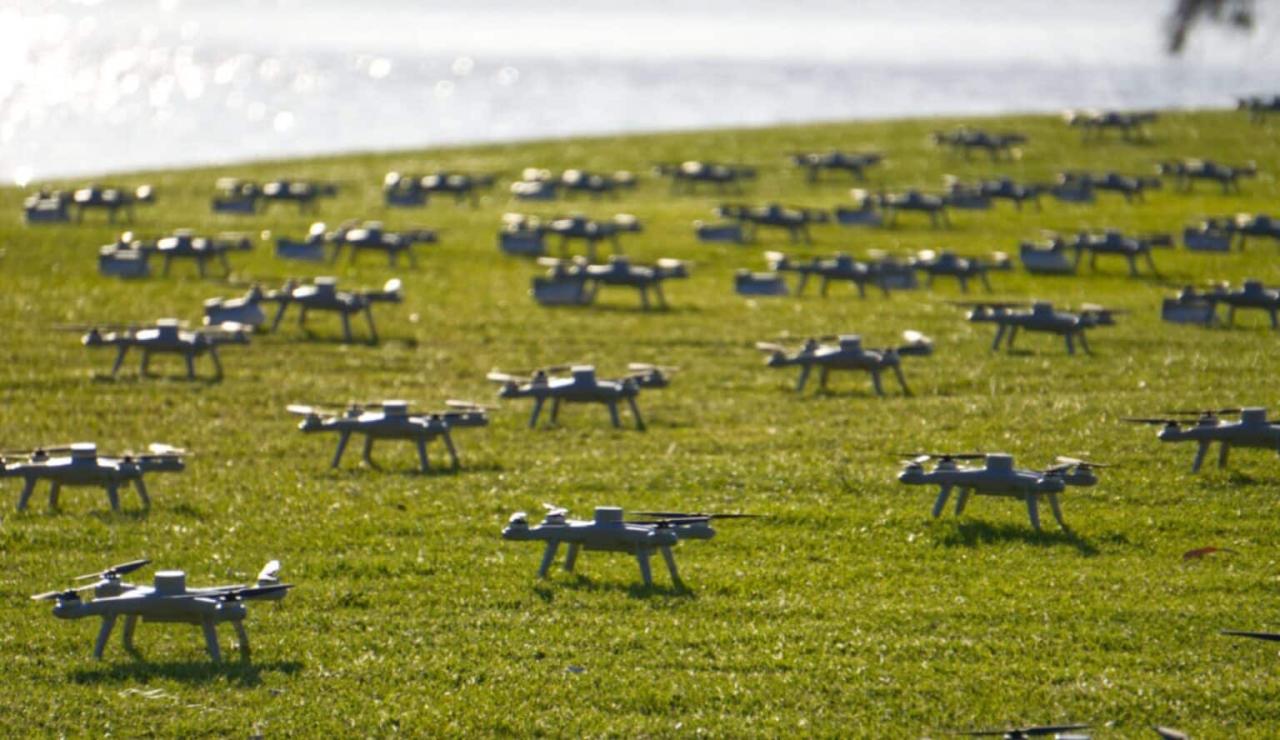
Florida’s airspace, like anywhere else, has restrictions. Drone shows must operate within the limitations defined by the FAA, avoiding restricted airspace near airports, military installations, and other sensitive areas. Altitude restrictions also apply; generally, drones are limited to 400 feet above ground level unless specific exceptions are granted. Furthermore, visual line of sight (VLOS) is often mandated, meaning the drone operator must maintain direct visual contact with the drone at all times.
Night operations usually require additional approvals and safety measures.
Permit Requirements for Different Types of Drone Shows
Permit requirements vary based on the size and complexity of the drone show. Small, private shows with a limited number of drones and a low-risk profile may require less stringent paperwork. Larger, commercial shows, especially those involving public displays or complex choreography, necessitate a more extensive application process, including detailed safety plans, insurance coverage, and potentially even environmental impact assessments.
Florida drone shows are becoming increasingly popular, offering spectacular nighttime displays. However, it’s crucial to remember the potential risks, as highlighted by incidents like the one described in this report on a drone show accident. Understanding these risks helps ensure future Florida drone shows remain safe and enjoyable for everyone involved.
The FAA’s website provides specific guidelines and form templates for different show categories.
Sample Permit Application Form
A sample permit application would include sections for applicant information, show details (date, time, location, number of drones, type of drones), flight plan (including altitudes and flight paths), safety procedures (emergency response plans, pilot qualifications), insurance information, and contact information for all involved parties. The form would require signatures and potentially notarization.
Popular Locations for Florida Drone Shows
Several locations in Florida offer exceptional settings for drone shows, each possessing unique advantages and challenges. This section explores five popular choices, highlighting their suitability based on factors such as infrastructure, accessibility, and crowd capacity.
Five Popular Drone Show Locations in Florida
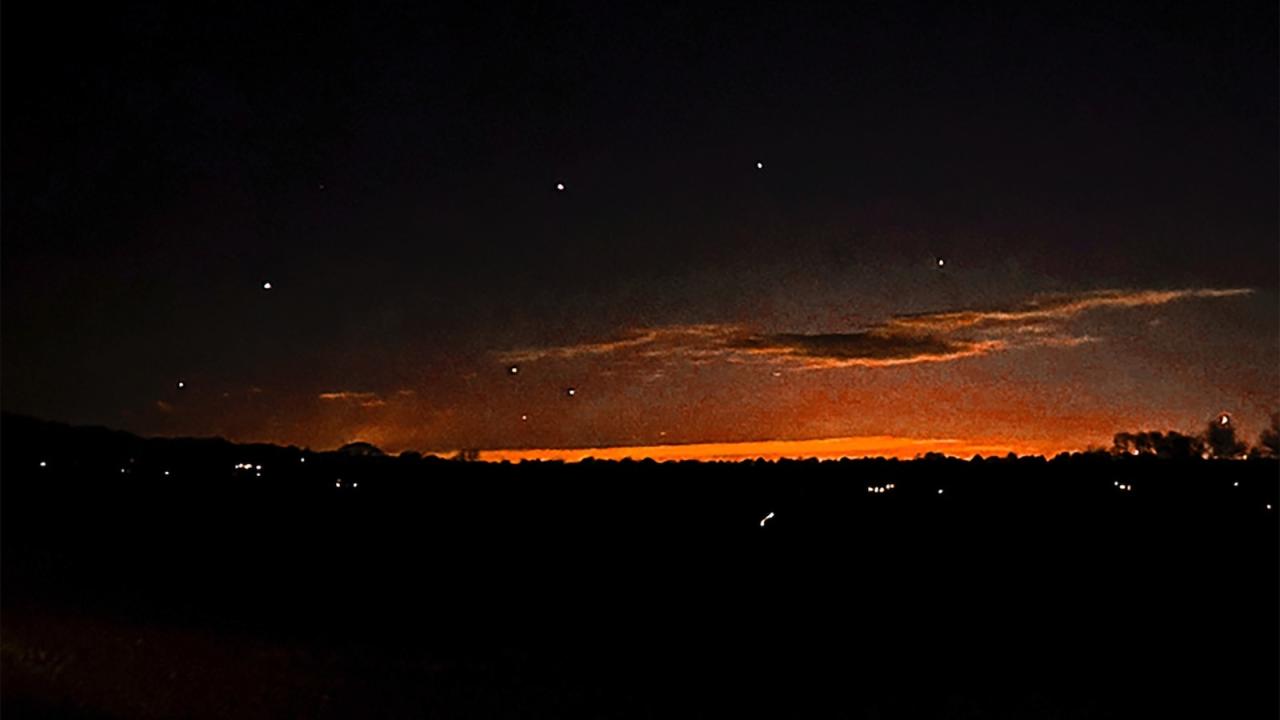
Suitable locations consider factors like available open space, proximity to amenities, accessibility for both spectators and equipment, and minimal interference from obstacles or airspace restrictions. Examples include large parks, beaches, stadiums, and specially designed event spaces. Successful shows at these venues often leverage the natural beauty or existing infrastructure to enhance the viewing experience.
Examples of Successful Drone Shows and Their Impact
Successful drone shows often integrate the location into the theme or choreography. For example, a show at a beach might feature marine-themed imagery, while a show at a stadium might incorporate dynamic light patterns reflecting the stadium’s structure. The positive impact includes tourism revenue, local business boosts, and positive media attention.
Logistical Advantages and Disadvantages of Each Location
Each location presents its own set of logistical considerations. For example, a beach might offer stunning visuals but present challenges regarding wind conditions and accessibility for equipment. A stadium offers controlled environment but may have limitations on show duration or airspace access. Careful planning and risk assessment are crucial for mitigating potential challenges.
Florida drone shows are awesome, offering vibrant displays of light and movement. If you’re looking for other incredible drone show experiences, check out the amazing visuals of the niagara falls drone show ; it’s a completely different setting but equally spectacular. Back to Florida, though – the unique aspects of the Florida shows, like the warm weather and diverse locations, really make them stand out.
Table of Popular Drone Show Locations
| Location | Capacity | Accessibility | Notable Features |
|---|---|---|---|
| Cocoa Beach Pier | 5000+ | High (beachfront access) | Ocean views, iconic pier backdrop |
| Daytona International Speedway | 100000+ | High (ample parking, good infrastructure) | Large open space, existing infrastructure |
| Lake Eola Park, Orlando | 2000+ | Medium (urban setting, parking limitations) | City skyline backdrop, water reflection |
| Everglades National Park (designated areas) | 1000+ | Medium (remote location, access restrictions) | Unique natural environment |
| Amelia Island | 3000+ | Medium (coastal location, parking considerations) | Beachfront setting, historical context |
Types of Drone Shows in Florida
Florida’s drone show landscape is diverse, encompassing various themes, technologies, and artistic styles. This section explores the different types of drone shows prevalent in the state, highlighting creative choreography and technological advancements.
Different Types of Drone Shows
Florida hosts a variety of drone shows, from simple static displays to elaborate choreographed performances synchronized with music or other events. Themed shows often tie into local events or celebrations, while advertising displays utilize drones to create eye-catching messages. Musical performances utilize drones to create visual accompaniment to music.
Examples of Creative Choreography
Creative choreography in Florida drone shows often leverages the state’s unique environment. For instance, a show might depict a manatee formation, or a vibrant sunset. Complex patterns, 3D shapes, and dynamic transitions are common features, enhancing the visual appeal and engagement.
Technological Advancements Enabling Diverse Shows
Advancements in drone technology, including improved battery life, enhanced GPS accuracy, and more sophisticated lighting systems, have greatly expanded the possibilities for drone shows. Software improvements have enabled complex choreography and precise synchronization, allowing for intricate and dynamic displays.
Unique Characteristics of Each Drone Show Type
- Themed Shows: Incorporate specific themes related to local events, holidays, or cultural celebrations.
- Musical Performances: Synchronize drone movements with music, creating a multi-sensory experience.
- Advertising Displays: Utilize drones to create large-scale advertising messages in the sky.
- Static Displays: Simpler shows featuring static formations of drones, often used for smaller events or promotional purposes.
- 3D Mapping Shows: Project images onto buildings or landscapes using drones.
The Economic Impact of Drone Shows in Florida
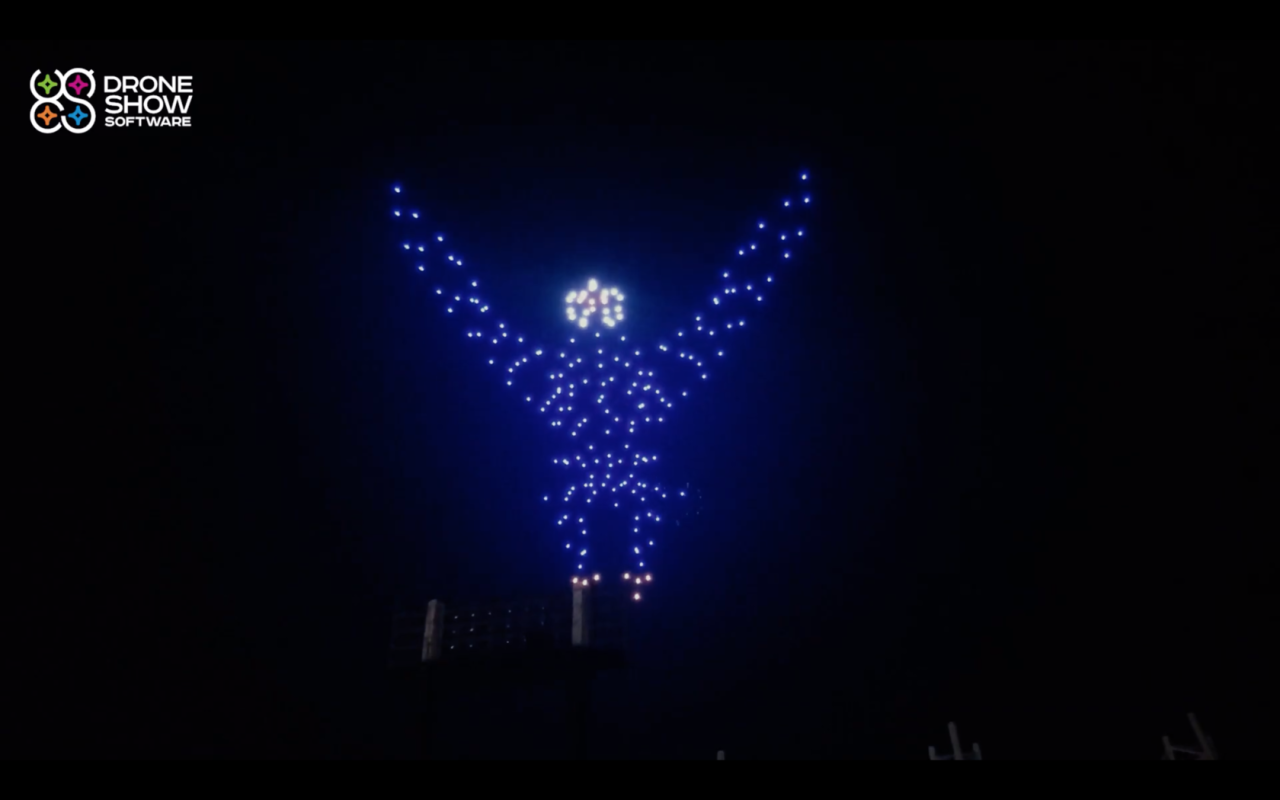
Drone shows contribute significantly to Florida’s economy, generating revenue and creating jobs. This section examines the economic benefits, potential for growth, and comparative impact compared to other entertainment forms.
Economic Benefits of Drone Shows
Drone shows attract tourists, boosting hotel occupancy, restaurant revenue, and spending on related activities. They create jobs for drone pilots, technicians, event organizers, and support staff. The economic impact is amplified by associated media coverage and social media engagement.
Florida’s drone shows are getting bigger and better, showcasing amazing aerial displays. Thinking about the logistics of getting those drones to the show reminds me of Amazon’s expanding drone delivery network; check out the current amazon drone delivery locations to see how far their reach extends. This future of delivery might even influence how we see drone shows staged in Florida in the years to come!
Potential for Future Economic Growth
The drone show industry in Florida is poised for substantial growth. As technology advances and public awareness increases, the demand for drone shows is likely to rise. This growth will create further job opportunities and stimulate related industries such as tourism and hospitality.
Comparison with Other Forms of Entertainment
Compared to other forms of entertainment, drone shows offer a unique and visually stunning experience, attracting a broad audience. While the initial investment can be significant, the return on investment can be substantial, particularly for large-scale events that attract significant tourism.
Visual Representation of Economic Flow
A visual representation would show a flow chart starting with initial investment (drone purchase, software, permits), leading to event revenue (ticket sales, sponsorships), followed by distribution of revenue (to organizers, pilots, local businesses, etc.), and finally, the overall economic impact on the local economy (tourism, job creation).
Safety and Security Aspects of Florida Drone Shows
Safety is paramount in drone shows. This section details safety measures, the role of regulatory bodies, potential risks, and emergency response procedures.
Safety Measures Implemented During Drone Shows
Safety measures include pre-flight inspections, redundant systems, pilot training, designated airspace, crowd control measures, emergency response plans, and on-site safety personnel. These measures protect both the audience and the environment.
Role of Air Traffic Control and Regulatory Bodies
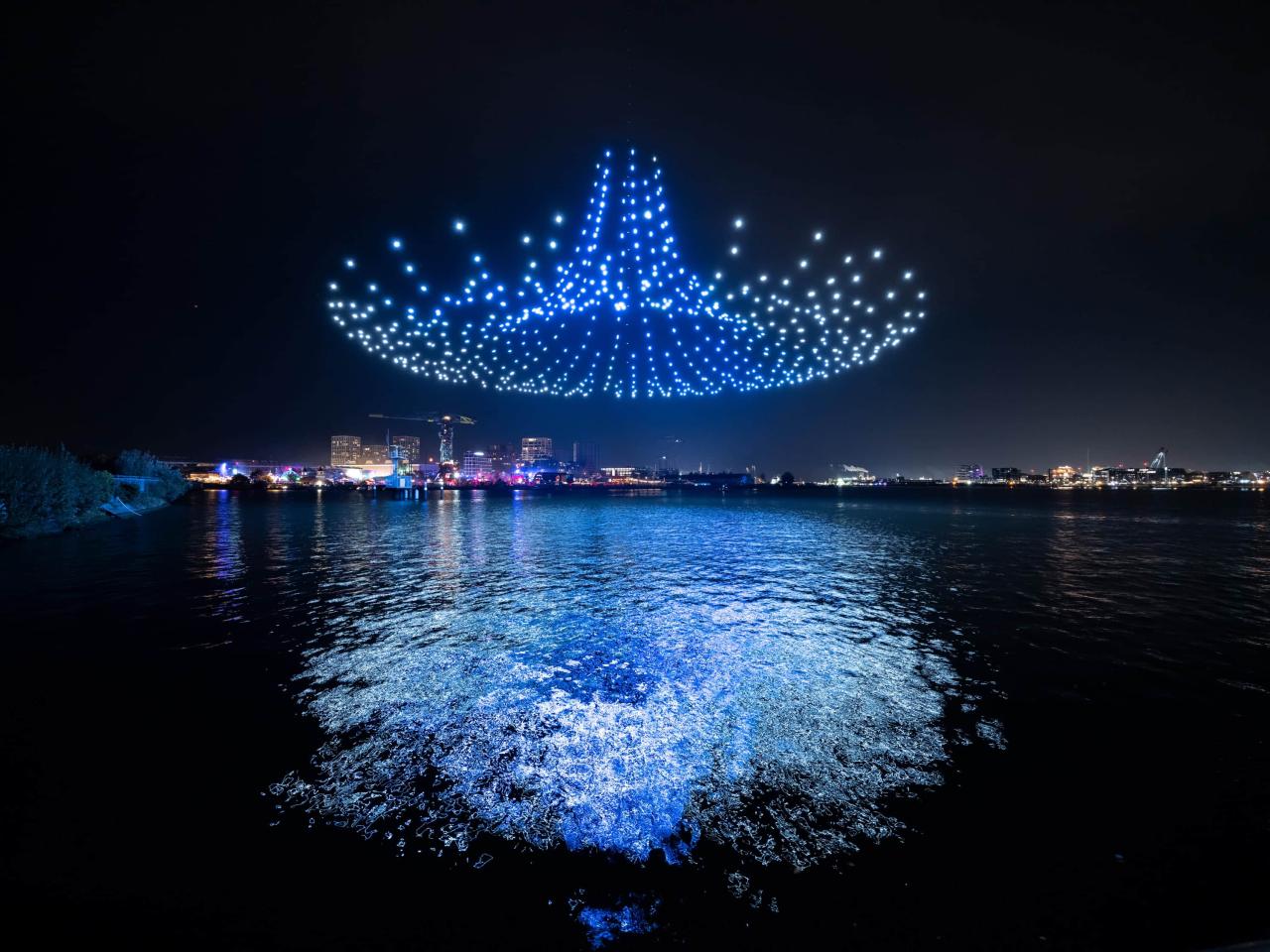
Air traffic control and regulatory bodies like the FAA play a crucial role in ensuring safety by coordinating airspace usage, enforcing regulations, and overseeing the show’s adherence to safety protocols. Their involvement minimizes the risk of collisions or other incidents.
Potential Risks and Mitigation Strategies
Potential risks include drone malfunction, loss of signal, adverse weather conditions, and unauthorized drone activity. Mitigation strategies involve thorough pre-flight checks, backup systems, weather monitoring, and security measures to prevent unauthorized drone operation near the show.
Emergency Response Procedures Flowchart
A flowchart would illustrate the steps to be taken in case of a drone malfunction, starting with initial detection of the problem, followed by immediate actions (e.g., activating emergency protocols, notifying authorities), and subsequent steps (e.g., securing the area, assessing damage, and implementing recovery procedures).
Marketing and Promotion of Florida Drone Shows
Effective marketing is key to a successful drone show. This section explores successful marketing campaigns, use of digital platforms, targeted strategies, and a sample marketing plan.
Successful Marketing Campaigns
Successful campaigns often leverage stunning visuals from previous shows, highlight the unique aspects of the location and choreography, and target specific demographics through appropriate channels. Partnerships with local businesses and media outlets also amplify reach and impact.
Use of Social Media and Digital Platforms
Social media platforms like Instagram, Facebook, and TikTok are vital for promoting drone shows. High-quality videos and images showcasing the spectacle are crucial. Targeted advertising campaigns can reach specific demographics and increase ticket sales.
Marketing Strategies for Different Target Audiences
Different strategies are used to reach various audiences. Families might be targeted through family-friendly promotions, while younger audiences might be reached through social media influencers and interactive campaigns. Business professionals might be attracted through corporate sponsorship opportunities.
Sample Marketing Plan
A sample marketing plan would Artikel specific goals (e.g., ticket sales, brand awareness), target demographics, marketing channels (e.g., social media, email marketing, print advertising), budget allocation, timelines, and key performance indicators (KPIs) for measuring success.
Environmental Considerations of Florida Drone Shows
Minimizing the environmental impact of drone shows is crucial. This section examines noise and light pollution, mitigation initiatives, and the potential for sustainable practices.
Environmental Impact of Drone Shows
Drone shows can generate noise pollution and light pollution, potentially impacting wildlife and nearby residents. The use of high-intensity lights can disrupt nocturnal animals, while the noise from drones can disturb local ecosystems.
Initiatives to Minimize Environmental Footprint
Mitigation strategies include using quieter drones, optimizing light intensity and duration, choosing appropriate show locations to minimize disruption to wildlife, and adhering to noise ordinances. Post-show cleanup is also essential.
Comparison with Other Outdoor Events
Compared to other outdoor events, drone shows generally have a relatively low environmental impact. However, responsible planning and mitigation strategies are necessary to minimize potential negative effects.
Potential for Sustainable Practices
The future of drone shows in Florida can incorporate sustainable practices such as using renewable energy sources for charging drones, employing biodegradable materials for show components, and partnering with environmental organizations to promote awareness and conservation.
Final Review
Florida drone shows are more than just captivating entertainment; they represent a fusion of technology, artistry, and economic opportunity. This guide has explored the multifaceted aspects of this burgeoning industry, highlighting the regulations, logistics, creative possibilities, and environmental considerations involved. As technology advances and the industry grows, we can anticipate even more spectacular and innovative drone shows illuminating Florida’s skies in the years to come.
The future of Florida drone shows is bright, promising both economic growth and breathtaking entertainment.
Frequently Asked Questions
How much does it cost to put on a drone show in Florida?
Costs vary greatly depending on the show’s scale, duration, complexity of choreography, and number of drones used. Expect significant expenses related to drone acquisition/rental, permits, insurance, crew, and marketing.
What are the typical insurance requirements for Florida drone shows?
Comprehensive liability insurance is crucial, covering potential damage to property or injury to individuals. Specific coverage amounts and policy details depend on the show’s size and location, so consulting with an insurance professional specializing in drone operations is recommended.
Are there restrictions on the types of drones that can be used?
Yes, regulations often specify drone models, weight limits, and safety features. Compliance with FAA regulations is paramount. Check with the FAA and local authorities for specific requirements.
How long does the permit process typically take?
The permit application review time can vary depending on the complexity of the show and the responsiveness of the relevant authorities. Allow ample lead time, ideally several weeks or even months, to ensure a smooth process.
